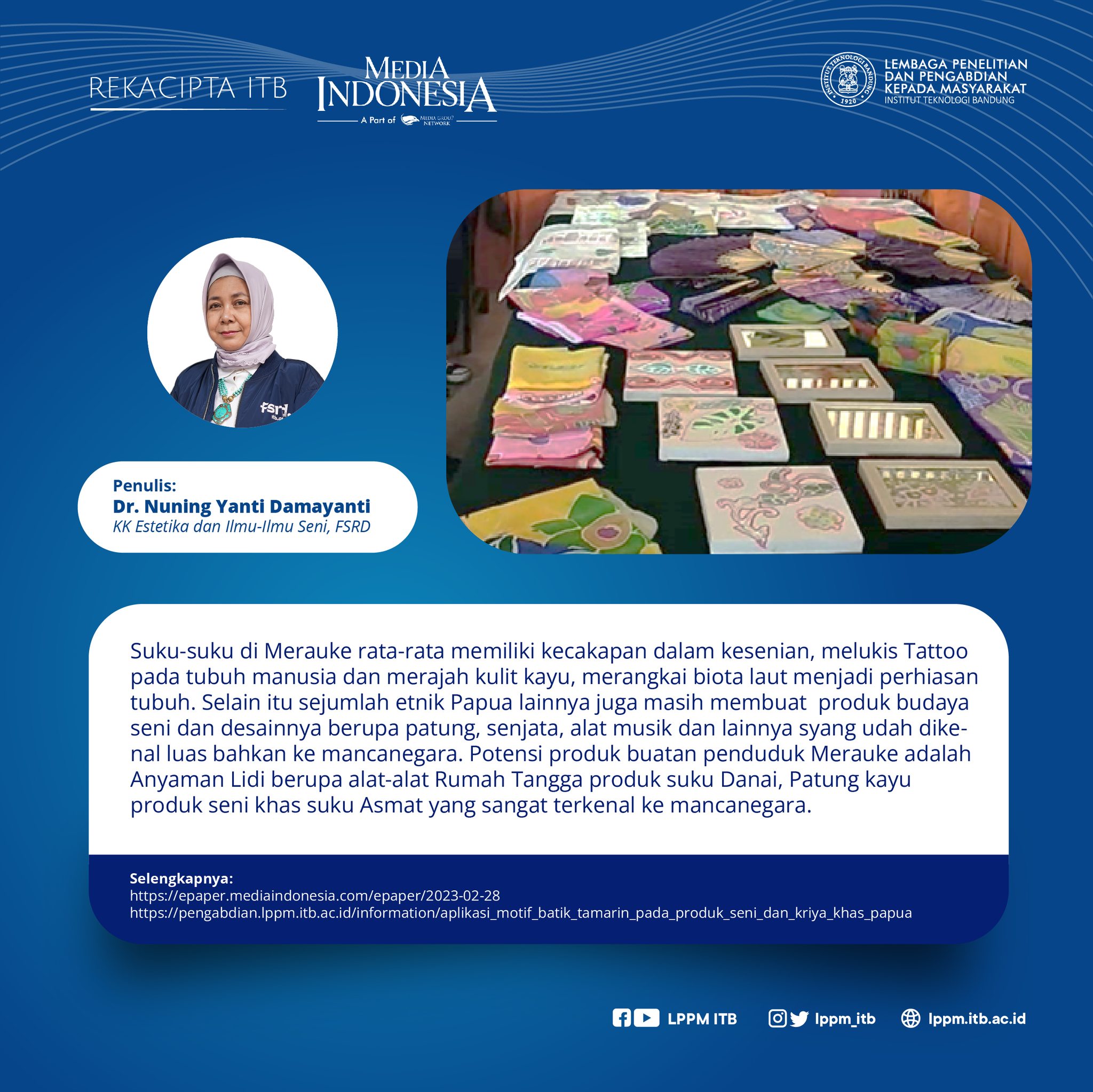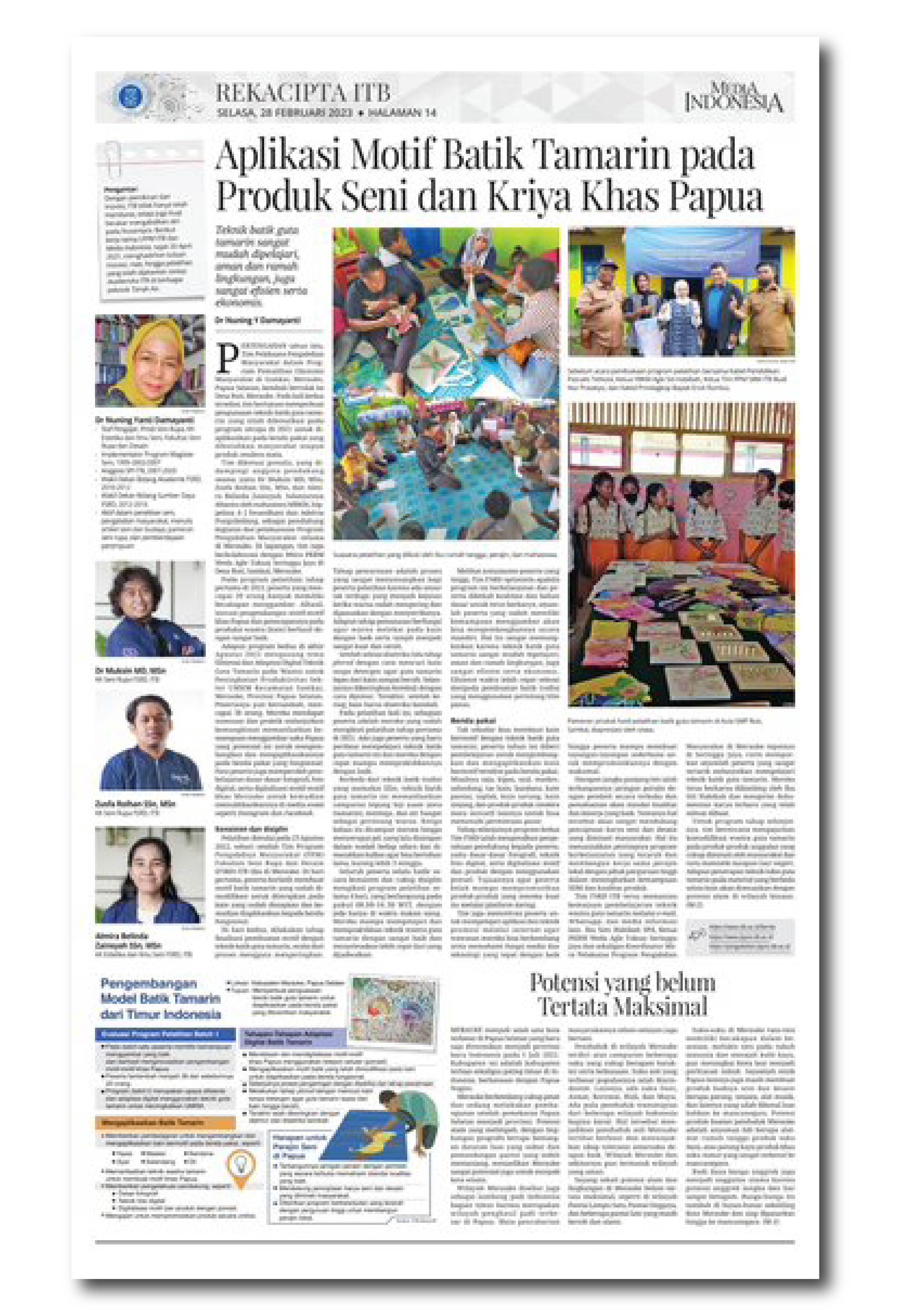FAD ITB Community Service Team Empowers Merauke-Made Artworks through Applying Tamarin Batik Technique
By Adi Permana
Editor Adi Permana

BANDUNG, itb.ac.id— In 2022, the Community Service Program team from FAD ITB revisited Buti Village in Merauke to improve their mastery of the guta tamarin batik technique, which had been introduced in a similar program in 2021.
The program aimed to improve the technique of applying Guta Tamarin in functional arts as well as in souvenirs as a way to increase trade that could help relieve their post-pandemic economy. The second program held in 2022 adopted the theme of “Digital Efficiency and Adaptation of Guta Tamarin Technique on Wastra Fabric to Improve MSME Sector Productivity in Samkai Subdistrict, Merauke, South Papua Province” and had 38 participants.
In addition to sharing insights and batik practice, the team also provided basic education of photography, digital photos, as well as Merauke-made motif digitalization to be published on social media. The training started on August 23, 2022, with the first agenda being digitalization using a mobile phone. Participants practiced creating tamarin batik motifs that had been modified for fabric application, which were then applied to functional goods.
On the second day, participants underwent motif creation finalization, from the guta process, drying, until coloring. The coloring stage was an amusing process for the participants, as there was a surprise element when the colors became dry and heated through ironing. Heating reaffirms the colors on the fabric, making them less prone to fading and look brighter. Throughout the four days of activities, participants consistently followed through the training program from 08.00-16.30, and they were able to learn and apply the wastra duta tamarin technique exceptionally, finishing earlier than the planned schedule, according to Dr. Nuning Y. Damayanti, the Community Service Program team leader.
“Viewing their high enthusiasm, we are optimistic that continuing this program and equipping the participants with the necessary skills and materials to create, they could develop it independently,” she remarked.

Not only were the participants capable of creating a motif fabric with the guta tamarin batik technique, this year they managed to learn how to apply the technique on fans, scarves, masks, and other innovative media. These products have potentials to be commercialized when also supported with publications from online platforms through simple reels introduced by the FAD ITB team. Hopefully, a network of craftsmen and consumers will emerge to support the creation of artworks and designs beloved by this community.
Until now, Dr. Nuning and the team continuously supervise the learning program through email, Whatsapp, and other communication platforms. Sitti Habibah S.Pd., as the head of PKBM Weda Agle Toksay Seringgu Jaya as well as coordinator for the Community Service in Merauke Partnership Executive, assisted in reporting the number of participants who were interested in continuing to learn deeper about the guta tamarin batik technique. They routinely create works under the guidance of Siti and share finished product documentations.
“For the next stage, the team plans to teach wastra guta tamarin modification on noteworthy products well-liked by the community and tourists, both local and global. Moreover, the application of guta tamarin painting technique on materials other than fabric will be adapted with the natural potential of each assisted area,” remarked Dr. Nuning.
*This article was published in Media Indonesia Rekacipta ITB rubric, and the full article is accessible on the website https://pengabdian.lppm.itb.ac.id.

Reporter: Sekar Dianwidi Bisowarno (Bioengineering, 2021)
Translator: Firzana Aisya (Bioengineering, 2021)

.jpg)
.jpg)
.jpg)
.jpg)
.png)

